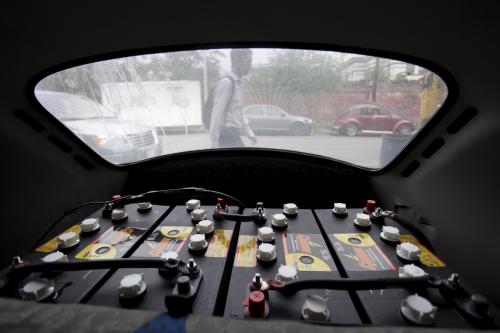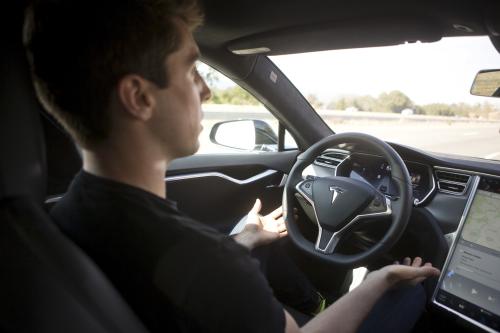When Samsung announced the Galaxy Note 7 on August 3, it could have hardly anticipated the media firestorm it would find itself in a month later. By September 2, Samsung had issued a recall of all 2.5 million units sold due to over 100 Note 7 batteries bursting into flames. However, the implications of Samsung’s recall reach further than the estimated $1.35 billion it will cost the company. The recall highlights the technical limitations associated with lithium-ion technology’s accelerating saturation of the battery market.
Between Tesla’s “Gigafactory” and China’s 2020 target of 5 million electric vehicles, the lithium-ion battery has come to represent a clean technology future in which ubiquitous energy storage infrastructure dethrones fossil fuels for good. Indeed, the cost of lithium has more than tripled since January 2015 due to increasing demand from the smartphone and electric vehicle markets. However, the reality for lithium-ion remains that the recent incarnations of the 25-year-old technology have nearly exhausted their energy storage potential, already reaching the 90 percent threshold of theoretical capacity. The marginal costs associated with pushing the envelope on that last 10 percent of efficiency will only grow, as evidenced by Samsung’s technical difficulties in their attempt.
Despite this impending bottleneck, governments and markets alike have doubled down on lithium-ion advancement. Of the $55 million the US Department of Energy recently invested into its “EV Everywhere Grand Challenge,” some $8.7 million will go to R&D efforts in search of “commercially scalable” manufacturing processes for both anodes and cathodes. The inertia generated by generous government subsidies since 2009 has ensured that the Chinese “new energy” vehicle market and its high-deployment, low-innovation model will set the pace for global demand, regardless of subsidy phase outs by 2020. Even traditional automakers such as Daimler (Mercedes-Benz) and BMW intend on leveraging their battery technology experience by establishing dedicated residential and commercial energy storage business segments.
While these policies and strategies come with the best intentions, namely to combat fossil fuel emissions and pollution, they carry with them a catch-22: as the lithium-ion ecosystem continues to grow at an accelerating rate, economies of scale will increasingly lock in the automotive, energy, and technology industries to a specific battery technology. While lithium-ion lock-in will initially have positive environmental and economic impact, the barriers to entry that it raises will stall the future commercialization of energy storage innovation, incurring significant opportunity costs in the long run.
The climate and environmental goals adopted by the international community will require alternatives to lithium-ion energy storage. Because any battery technology can only store a certain amount of energy per kilogram of mass, there are crucial sources of greenhouse gas emissions for which no lithium-ion alternatives exist. For instance, the transport industry contributes roughly 22 percent of global emissions, but the size of any lithium-ion battery capable of entirely powering a freighter, airplane, or heavy-duty truck would prove mechanically infeasible. Moreover, the prospect of scaling domestic lithium-ion energy storage solutions, like Tesla’s Powerwall, for the purpose of normalizing the ebb and flow nature of renewable energy finds itself undermined by concerns regarding safety and longevity.
As lithium-ion technology continues to saturate the battery market, the onus falls on policymakers to provide the breathing room necessary for alternative energy storage innovations to scale. Both lithium-sulfur and aluminum-air batteries are promising alternatives with energy densities that range between three to ten times greater than the lithium-ion standard, but only the former has seen any government investment. Furthermore, without any intervention similar to that which set lithium-ion technology on its current trajectory, there is a high likelihood of the incumbent technology crowding out alternatives. In that regard, continued policymaker myopia toward lithium-ion lock-in risks impeding progress on both the UN’s 2030 Sustainable Development Goals and the International Panel on Climate Change’s 2050 emissions reduction targets. If lithium-ion batteries cannot meet our energy needs nor our climate goals, investment in alternatives must begin in earnest.
Maximilian Fiege contributed to this post.








Commentary
Investment in lithium-ion batteries may crowd out future innovation
October 4, 2016